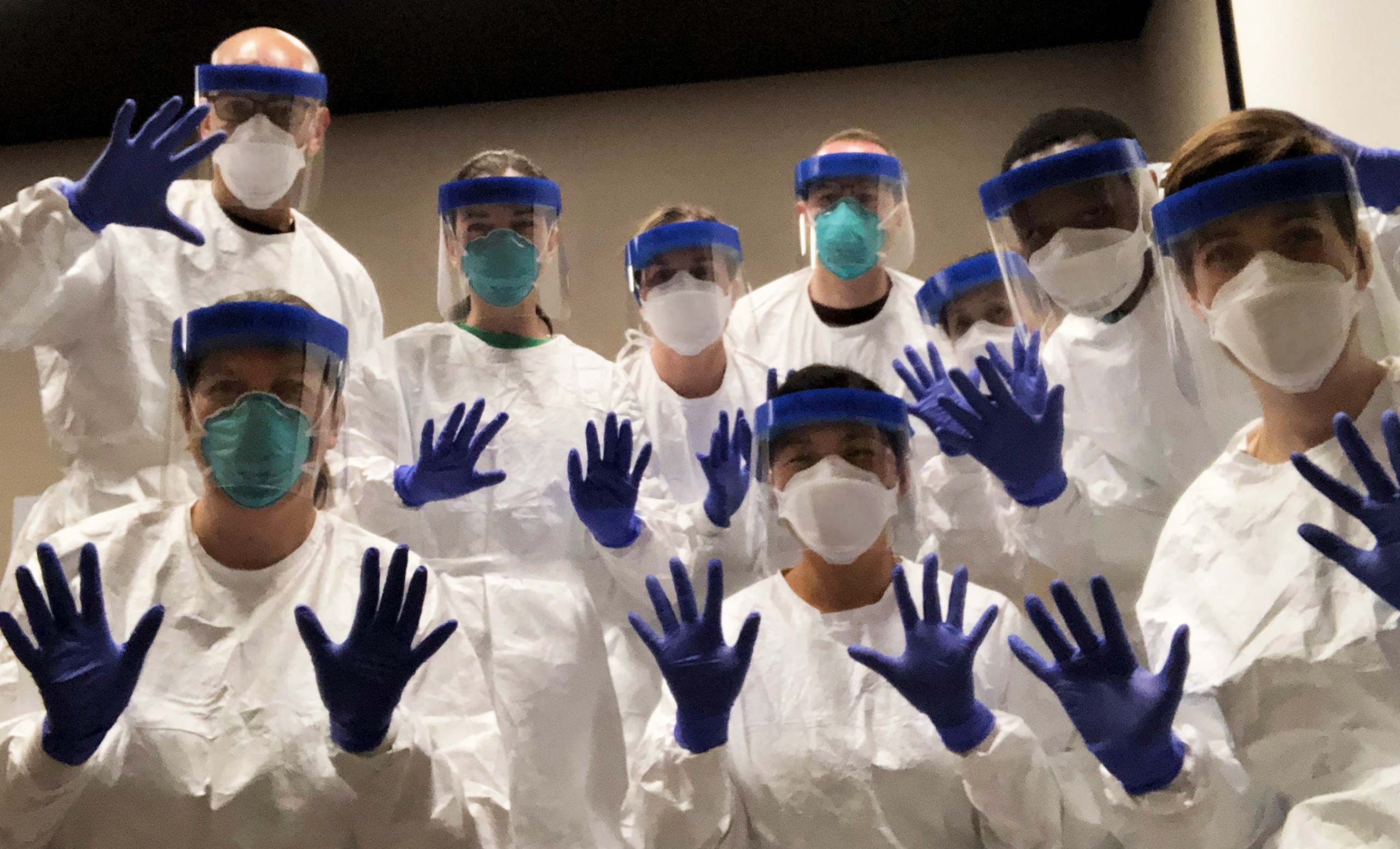Aquatics FAQs
Recommendations for Fully Vaccinated People
COVID-19 Homepage
Contact Tracing Workflow in a non-US setting
This document is intended to be professionally generated as a job aid for distribution via CDC country offices to local Ministries of Health or National Public Health Institutes with the intent to be given to facilities with frontline healthcare workers doing contact tracing, case investigations, community outreach, or in other ways working with potential contacts. It is meant to serve as a visualization for these individuals to understand the contact tracing process flow, the need for daily monitoring of all contacts, and what will cause the need for a case investigation.
COVID-19 Contact Tracing Workflow: Single Exposure
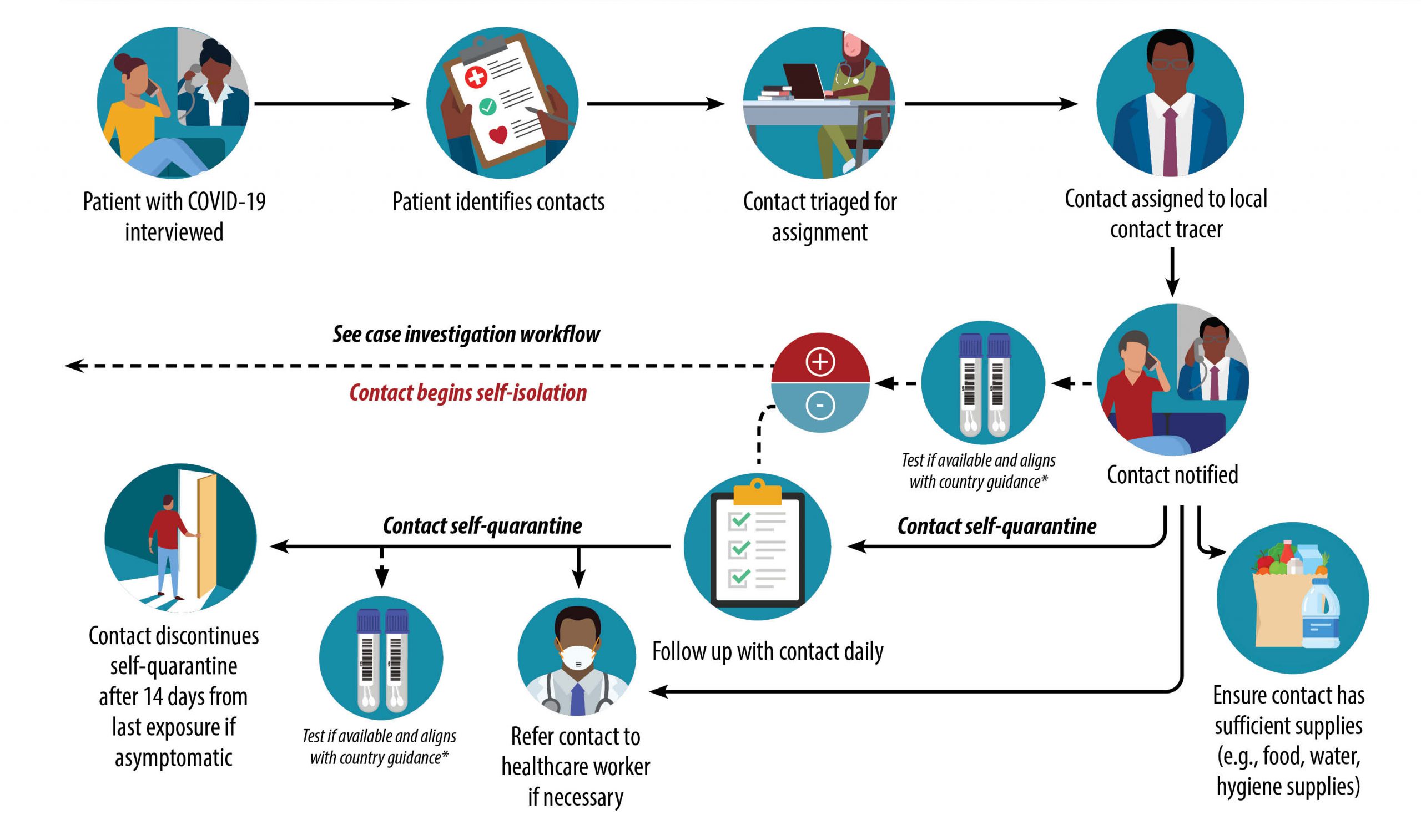
Patient with COVID-19 interviewed
Patient identifies contacts
Contract tracer notifies contact
- Test if available and aligns with country guidance*
- If positive
- See case investigation workflow
- Contact begins self-isolation
- Ensure contact has sufficient supplies (e.g., food, water, hygiene supplies)
- Contact self-quarantine
- Follow up with contact daily
- Refer contact to healthcare worker if necessary
- Test if available and aligns with country guidance
- If positive
Contact discontinues self-quarantine after 14 days from last exposure if asymptomatic
*if contact tests positive or develops COVID-19 symptoms, case investigation is necessary
COVID-19 Contact Tracing Workflow: Continuous Exposure
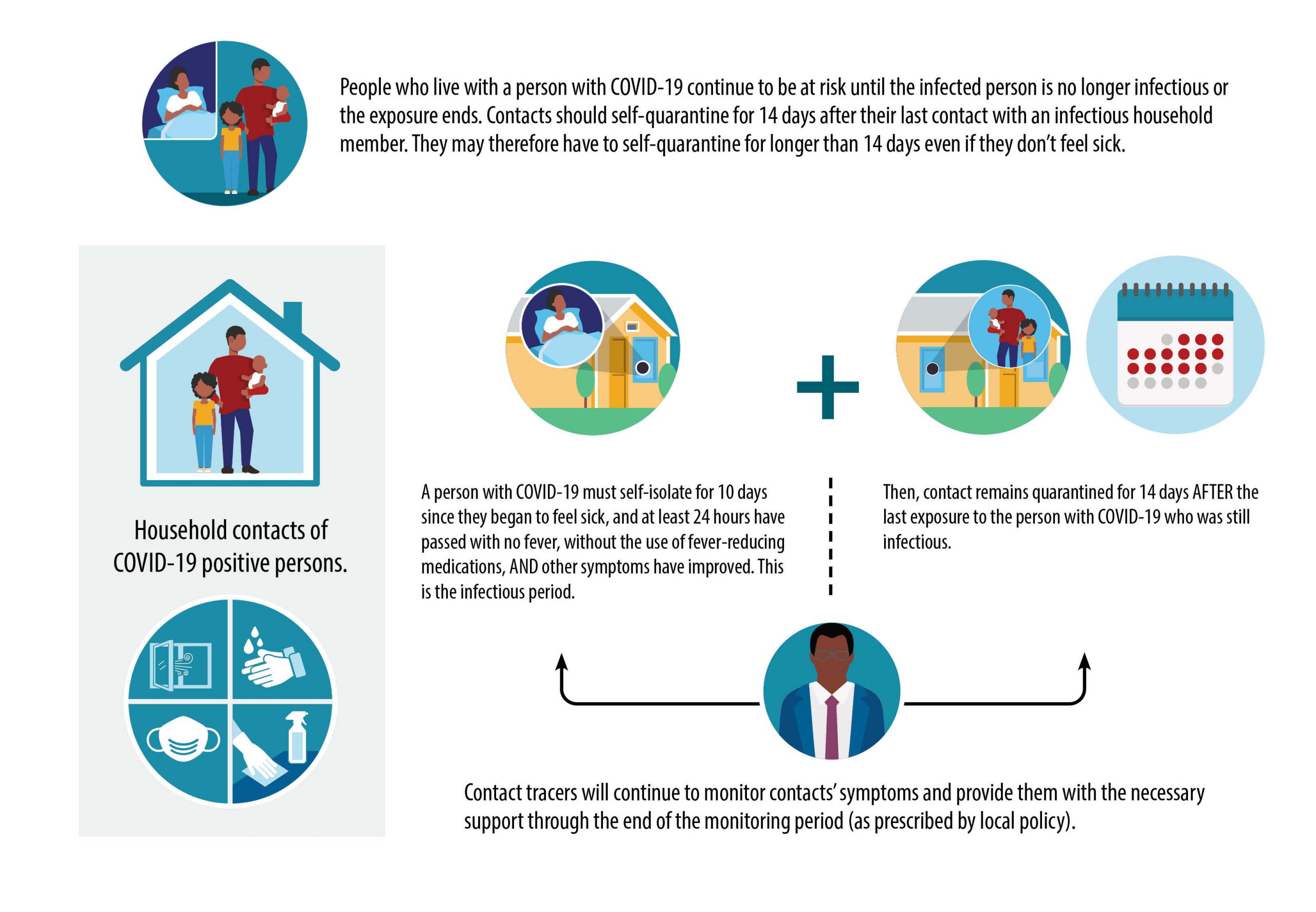
People who live with a person with COVID-19 continue to be at risk until the infected person is no longer infectious or the exposure ends. Contacts should self-quarantine for 14 days after their last contact with an infectious household member. They may therefore have to self-quarantine for longer than 14 days even if they don’t feel sick.
Household contacts of COVID-19 positive persons.
- A person with COVID-19 must self-isolate for 10 days since they began to feel sick, and at least 24 hours have passed with no fever, without the use of fever-reducing medications, AND other symptoms have improved. This is the infectious period.
- Then, contact remains quarantined for 14 days AFTER the last exposure to the person with COVID-19 who was still infectious.
Contact tracers will continue to monitor contacts’ symptoms and provide them with the necessary support through the end of the monitoring period (as prescribed by local policy).
Tracing Contacts of COVID-19 Cases
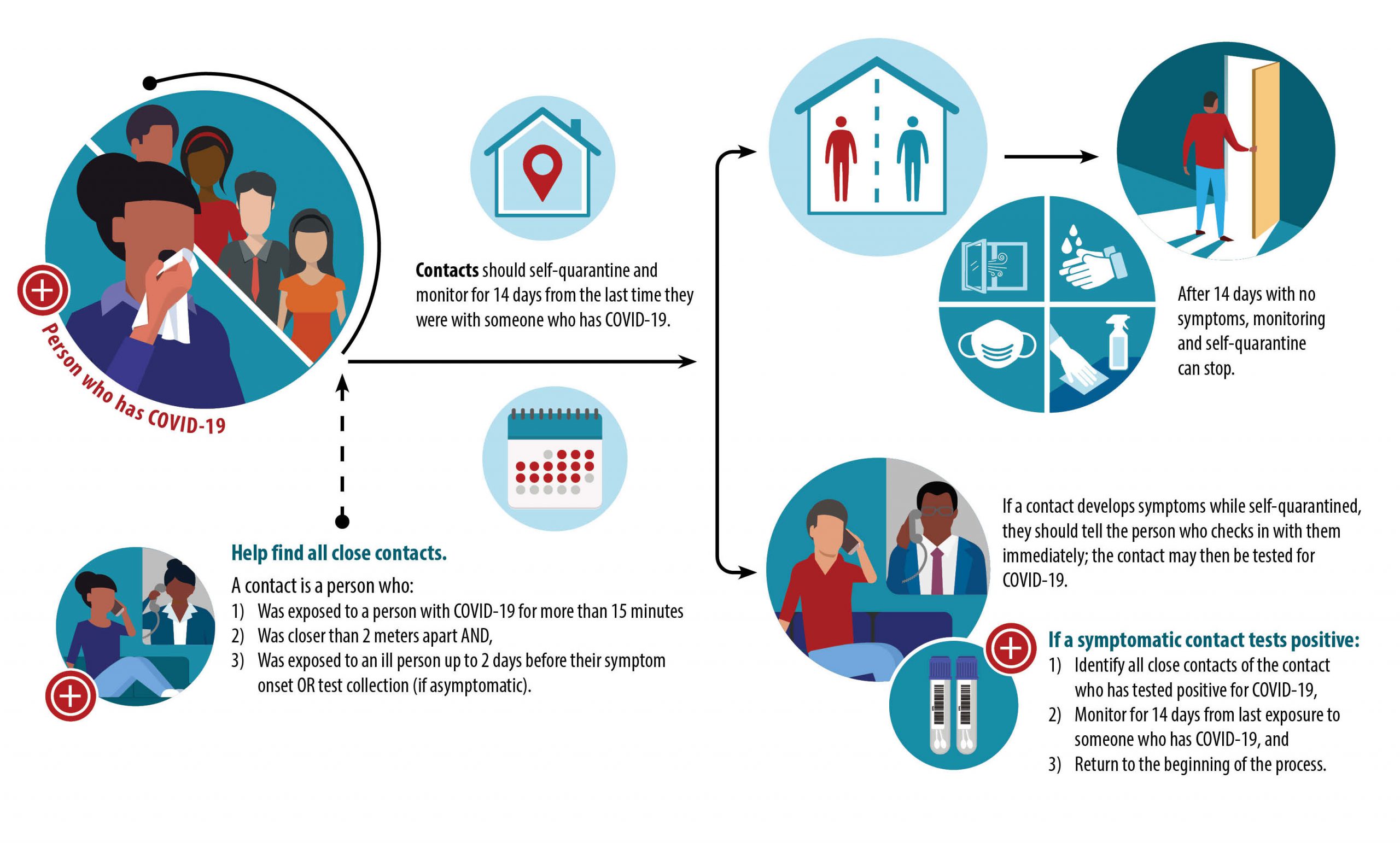
After being with someone who has COVID-19, contacts must self-quarantine for 14 days, even if they don’t feel sick. Contact tracing can help us slow the spread of COVID-19.
Positive person who has COVID-19
Help find all close contacts.
A contact is a person who:
- Was exposed to a person with COVID-19 for more than 15 minutes,
- Was closer than 2 meters apart AND,
- Was exposed to an ill person up to 2 days before their symptom onset OR test collection (if asymptomatic).
Contacts should self-quarantine and monitor for 14 days from the last time they were with someone who has COVID-19.
After 14 days with no symptoms, monitoring and self-quarantine can stop.
If a contact develops symptoms while self-quarantined, they should tell the person who checks in with them immediately; the contact may then be tested for COVID-19.
If a symptomatic contact tests positive:
- Identify all close contacts of the contact who has tested positive for COVID-19,
- Monitor for 14 days from last exposure to someone who has COVID-19, and
- Return to the beginning of the process.
Contact Tracing: Keeping Your Community Safe
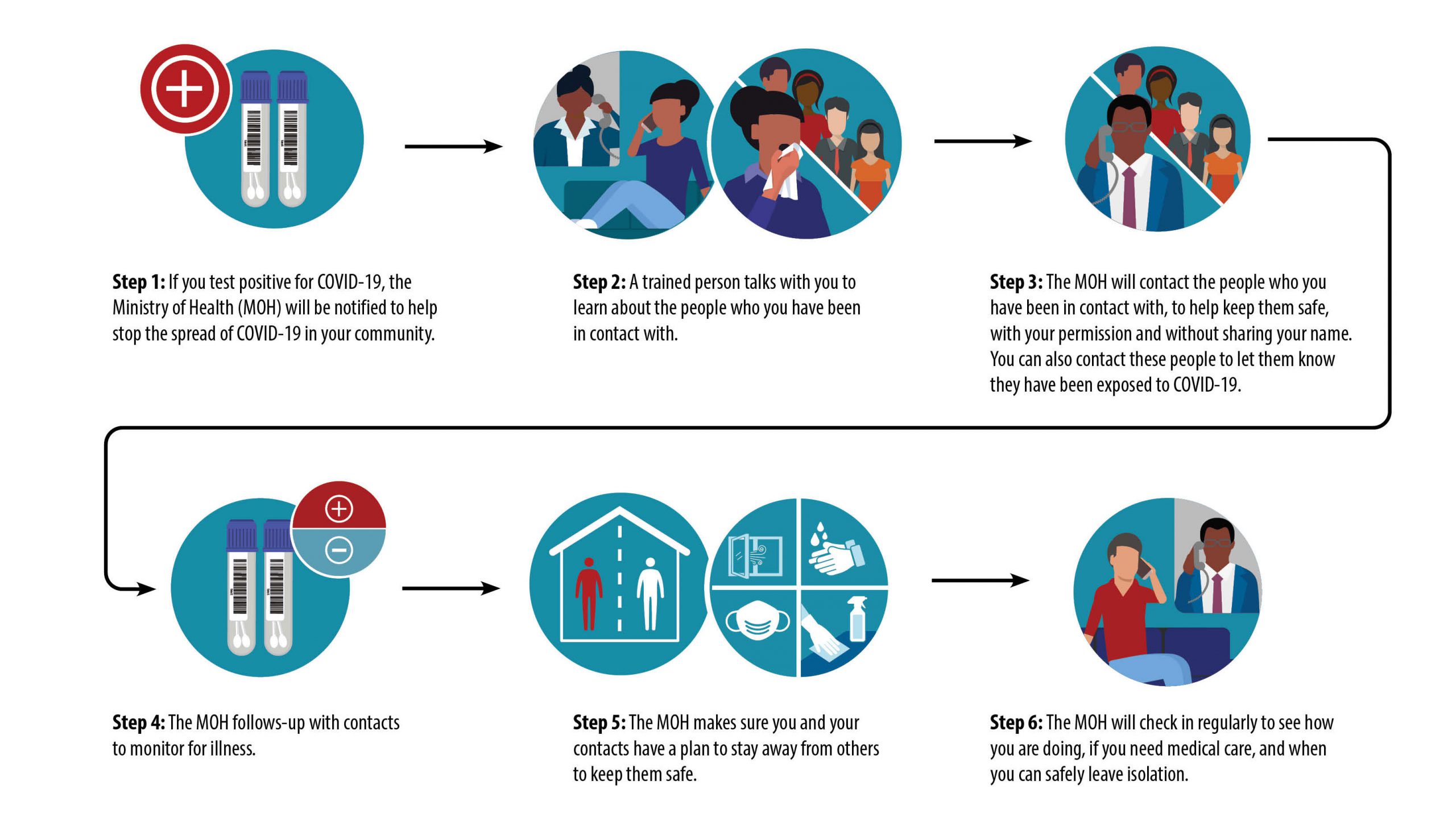
Step 1: If you test positive for COVID-19, the Ministry of Health (MOH) will be notified to help stop the spread of COVID-19 in your community.
Step 2: A trained person (called a contact tracer) talks with you to learn about the people who you have been in contact with.
Step 3: The MOH will contact the people who you have been in contact with, to help keep them safe, with your permission and without sharing your name. You can also contact these people to let them know they have been exposed to COVID-19.
Step 4: The MOH follows-up with contacts to monitor for illness.
Step 5: The MOH makes sure you and your contacts have a plan to stay away from others to keep them safe.
Step 6: The MOH will check in regularly to see how you are doing, if you need medical care, and when you can safely leave isolation.
